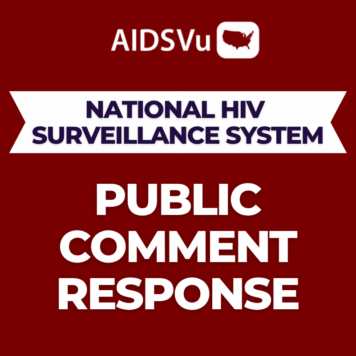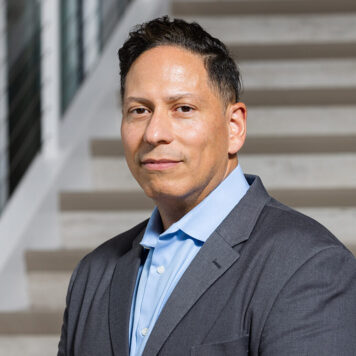Dr. Vincent Guilamo-Ramos, PhD, MPH, LCSW, RN, ANP-BC, PMHNP-BC, FAAN is the Executive Director of The Institute for Policy Solutions and a tenured full professor at the Johns Hopkins School of Nursing. Dr. Guilamo-Ramos founded and directs the Center for Latino Adolescent and Family Health (CLAFH), and serves on the board of UnidosUS, the largest Latino civil rights organization in the United States. He is currently working on research to solve the HIV crisis among the U.S. Latino population.
Q: A lot of your work emphasizes health equity. What led you to focus on health disparities, and how have you seen health equity shift over time?
First, I want to make a couple of important points about the focus of my work. It’s true that a lot of my research and policy advocacy ultimately aims to achieve health equity for everyone living in this country. But to meet that ambitious goal, I am constantly thinking about what can be done to eliminate health and health care inequities among Latinos and other minoritized communities today. The traditional terminology in this line of work used to be “reducing disparities,” but now the field is consciously shifting to “eliminating inequities” to make it absolutely clear that many of the differences in minoritized communities’ health status are not inevitable or acceptable. To the contrary, these health and health care inequities are avoidable, unfair, unjust, and shaped by social, economic and environmental conditions that can be improved.
Historically, we have made little progress on eliminating health inequities in this country. In 2003, the Institute of Medicine issued Unequal Treatment: Confronting Racial and Ethnic Disparities in Health Care, which is widely considered one of the most groundbreaking reports on health care equity. Some 20 years later, I served on the expert committee convened by the National Academies of Sciences, Engineering, and Medicine (NASEM) to provide a comprehensive update to that report, which we released in June 2024. As detailed in Ending Unequal Treatment: Strategies to Achieve Equitable Health Care and Optimal Health for All, our committee found that racial and ethnic inequities remain a fundamental flaw of our health care system, and that the differences seen in minoritized populations are emblematic of injustices not only within the health care system but in society at large.
To ensure long overdue progress toward the elimination of health and health care inequities, I am working with colleagues across disciplines and geographies to design new models of care that meet the clinical and social needs of minoritized populations through community-engaged and whole-person care.
Q: Your newest research, “The U.S. Latino HIV Crisis – Ending an Era of Invisibility,” highlights the HIV crisis among the Latino population in the U.S. What was the impetus behind this research, and what implications do the findings have for the HIV/AIDS epidemic in the U.S.?
Before I get into the Latino HIV crisis, I want to acknowledge the extraordinary successes that have been achieved recently in the U.S. effort to End the HIV Epidemic. I have tremendous admiration and respect for the countless friends and colleagues in government, academia, community organizations, health care and industry who have contributed to improvements in prevention and care outcomes. For example, recent CDC data show that between 2010 and 2022, there was an overall 19% decline in new HIV infections, including a 29% decline among Blacks and a 25% decline among Whites.
But this data also underscores inequities in the nation’s response to HIV among Latinos that have motivated me to help solve this crisis. While the numbers of new HIV infections have declined substantially overall and for many groups, Latinos experienced a 12% increase. This escalating crisis can be summed up in another disturbing statistic: in 2022 an estimated one third of new HIV infections occurred in Latinos. This is compared to less than one fourth in 2010.
What’s disheartening is that this isn’t news. Back in 2019, colleagues and I saw the crisis after reviewing the CDC’s HIV surveillance data and sounded an alarm in an article published in the American Journal of Public Health. Despite a subsequent campaign to address the crisis that was mounted by a coalition of Latino health and social welfare organizations from across the U.S., neither our advocacy efforts nor the continuing crisis have resulted in adequate investments to end HIV inequities among Latinos. In fact, as my colleagues and I outline in a new article in the New England Journal of Medicine, the crisis has escalated and is particularly affecting young Latino men who have sex with men and transgender Latinas.
For me, this crisis is personal and professional. As a gay Latino man, I am strongly compelled to do what I can to end what I call the “era of invisibility,” which is threatening the health and wellbeing of my community. While I can’t ascribe motivations for the invisibility, I can work to ensure that the anti-immigrant sentiments in our current political climate don’t by extension dilute our nation’s response to the Latino HIV crisis. I do this through my research and advocacy to end HIV inequities among Latinos by aligning prevention and care services to their needs, but this work also benefits everyone. Latinos are the largest racial and ethnic group after Whites, so we must end the Latino HIV crisis before we can end the epidemic.
Q: Your research highlights that the Latino HIV crisis most profoundly effects Latino men who have sex with men (MSM). Why is that?
Yes, the recent CDC data on new infections among Latino MSM is staggering. 2022 marked the first year that more new HIV infections occurred in Latino MSM than in MSM of any other racial or ethnic group. Most alarming were the findings that MSM ages 25-34 had a 95% increase in new HIV infections between 2010 and 2022. Between 2021 and 2022 alone, the CDC recorded a 15% increase in estimated new infections in this group. It is also alarming that transgender Latina women—for whom HIV incidence estimates are not available—had a 94% increase in annual new diagnoses between 2014 and 2022.
There are several reasons for these alarming outcomes among Latino MSM and transgender Latina women. To begin with, all Latino populations’ health is underprioritized, and as a result the nation’s health care and public health workforce isn’t adequately prepared to address the linguistic and cultural needs of Latinos. On top of that, we have an under prioritization of the Latino HIV epidemic. When a community’s needs are not prioritized in the HIV response nationally or in their local communities, the trustworthiness in the health care system can be negatively impacted as well as engagement in HIV services among Latino MSM.
To make progress, we must address the inequitable reach of existing HIV prevention, testing and treatment services by aligning them to Latinos’ needs. National data prove that PrEP coverage in Latino populations remains inadequate and Latinos living with HIV are more likely to be unaware of their status, less likely to receive HIV care and less likely to have viral suppression than people living with HIV in the U.S. overall. Additionally, marginalized Latino communities like MSM are disproportionately affected by harmful social determinants of health.
At the Center for Latino Adolescent and Family Health (CLAFH), we are working to end the Latino HIV crisis and all health and health care inequities by developing new models of care that prioritize prevention, health promotion and restorative care while fully integrating clinical and social care. Additionally, we support and advocate for interprofessional care teams that are representative of the communities they serve and broadly engage all clinical and non-clinical professionals in patient care. Finally, we are designing protocols to ensure equitable care access and quality, regardless of linguistic or cultural background.
Q: Your research has landed on several priority areas that you believe could improve the nation’s response to the Latino HIV crisis. Can you elaborate on those?
I don’t think the government or institutions, or individual communities can solve the Latino HIV crisis working separately. I believe we need a coordinated multisectoral response by researchers, public health practitioners, clinicians, policymakers, and other community and private-sector stakeholders that are focused on six priority areas:
- Raising the visibility of the Latino HIV crisis by elevating national media coverage of strategies for addressing the crisis; launching culturally and linguistically tailored public health campaigns in Latino communities; increasing Latino leadership in public health, health care administration and health policy arenas; and prioritizing Latinos in federal agencies’ responses to and funding of HIV prevention and treatment needs.
- Conducting meaningful Latino community engagementto ensure HIV services are responsive to the communities they serve. Strategies can include collaborating with trusted local organizations, holding community forums and workshops, training community members to become peer educators, creating targeted media campaigns, addressing stigma and misinformation, and committing to continuous community engagement by creating feedback mechanisms as programs are designed and implemented.
- Improving our public health response by collecting and reporting data on Latino HIV inequities in incidence, prevention and treatment; creating Latino-specific and contextually tailored response plans in Ending the HIV Epidemic priority jurisdictions; meaningfully engaging Latino grassroots communities in the development of public health programs; equitably allocating resources to Latino-specific HIV testing, prevention and treatment programs; increasing engagement of private sector, academic, and community-based organization partnerships to address HIV in Latino communities.
- Strengthening HIV service delivery by increasing diversity in the HIV workforce and ensuring their cultural/linguistic preparedness; training the prevention and treatment workforce in integrated clinical and social care for Latinos; eliminating economic barriers to testing, prevention and treatment services; investing in non-traditional service delivery models like community-based care and also in health workforce segments like nurse-led prevention and treatment; increasing scale up of Latino evidence-based HIV prevention and treatment tools.
- Addressing the structural drivers that contribute to the crisis by enacting evidence-based laws and policies that increase rather than reduce access to HIV prevention and care; scaling up policies and programs that eliminate issues like systemic and structural racism, anti-immigrant sentiment, discrimination, stigma, and medical mistrust; integrating HIV clinical care with behavioral health care and services to address health-related social needs.
- Fostering research and evidence generation that can inform solutions to the crisis by increasing scientific workforce diversity with expertise in Latino social determinants of health and elimination of Latino health inequities; creating mutually beneficial and sustainable academic-community partnerships; conducting rigorous effectiveness evaluations of Latino-specific public health and health care programming; and increasing equitable funding for Latino-specific HIV research and demonstration projects.




